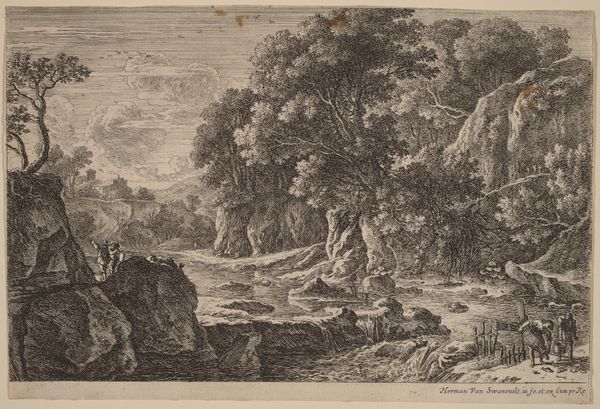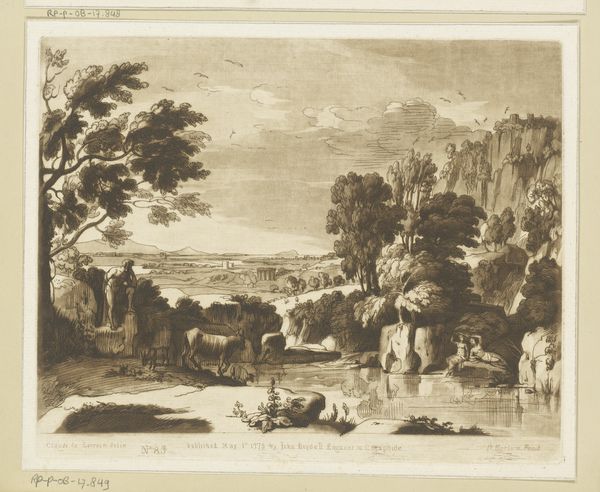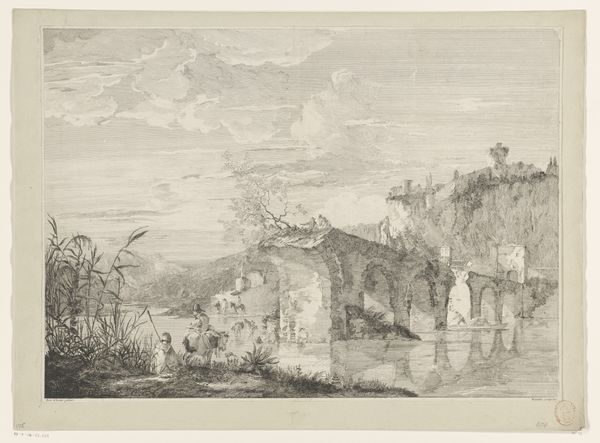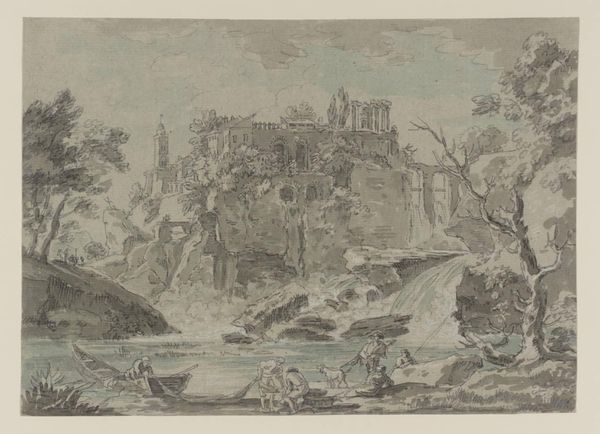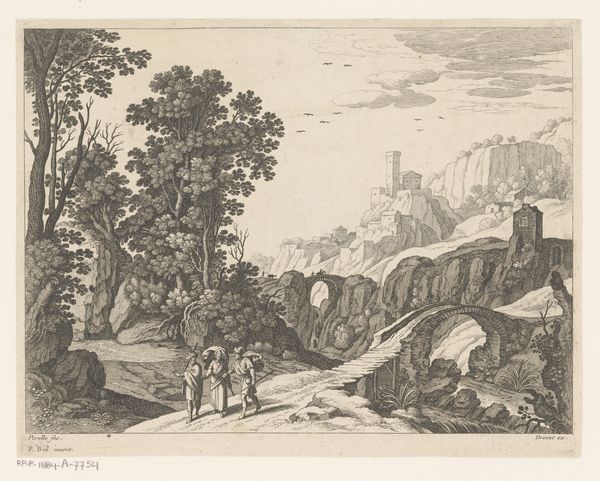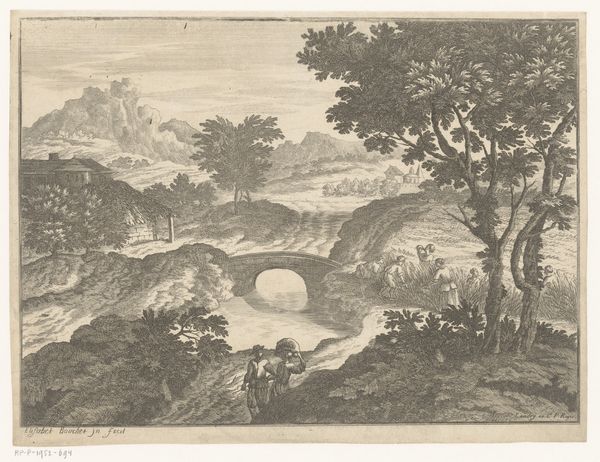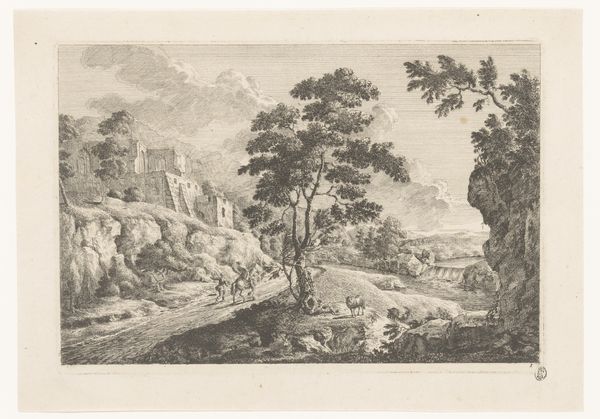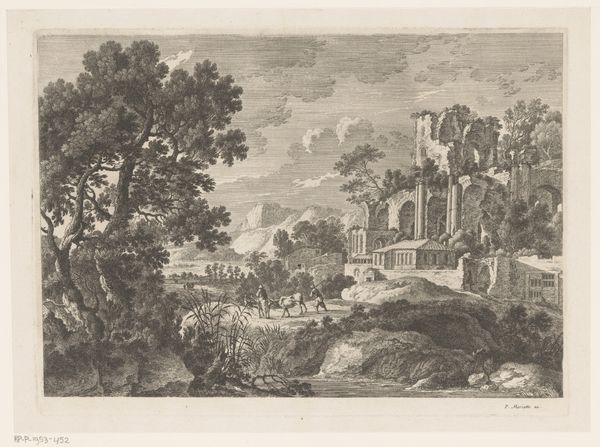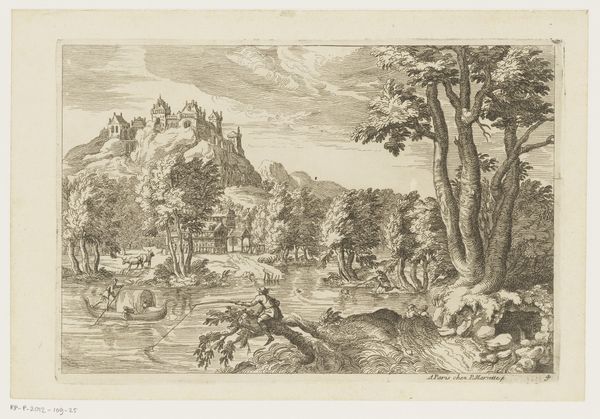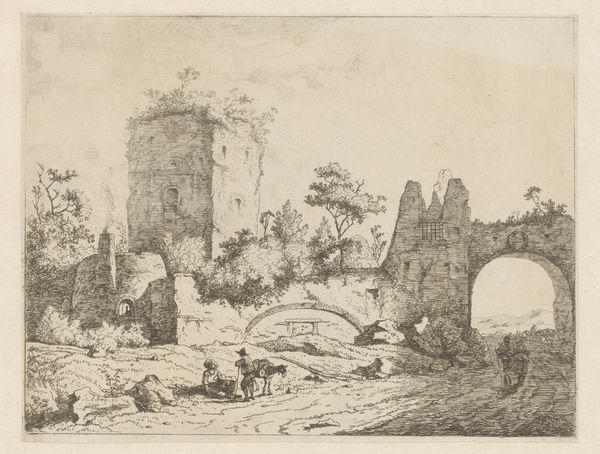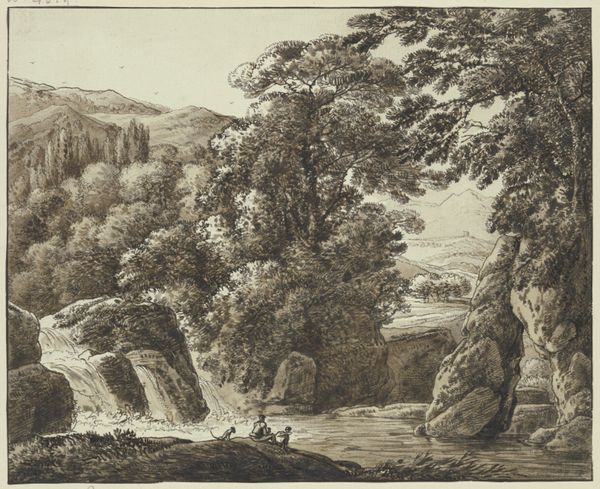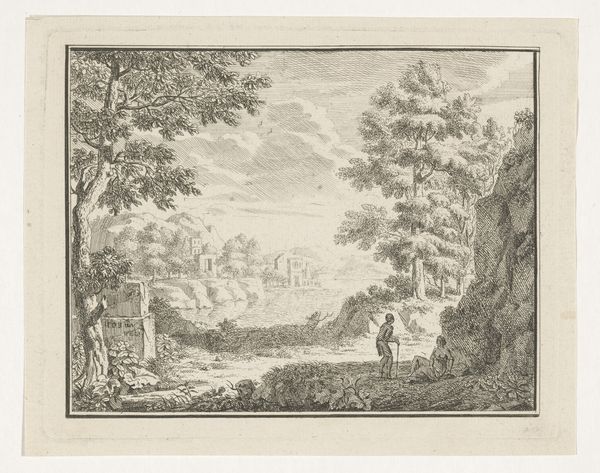
print, etching
#
pen and ink
# print
#
etching
#
old engraving style
#
landscape
#
classical-realism
#
form
#
line
#
history-painting
#
realism
Copyright: National Gallery of Art: CC0 1.0
Jan Smees created this etching of buildings in ruins alongside a river in the first half of the 18th century. This image evokes the picturesque aesthetic, a popular concept during that time. The combination of natural beauty with the decay of classical architecture speaks to a broader cultural interest in the passage of time and the transience of human achievement. You see, by the 1700s, the Grand Tour – a sort of pilgrimage of the British upper classes – was well underway. Young aristocrats would travel to Italy to study the art and architecture of antiquity. Smees, being Dutch, likely never made it as far as Rome. Instead, he drew on the rich tradition of Italianate landscape painting in the Netherlands. He was also an engraver whose work was primarily to reproduce other artist’s works. But the ruins in the foreground remind us that all empires fall and landscapes shift, a theme that resonated deeply in a period of evolving social and political landscapes. Historical research, including travel accounts and art market analyses, helps us understand how this image reflects the cultural values and historical conditions of its time.
Comments
No comments
Be the first to comment and join the conversation on the ultimate creative platform.

